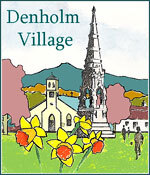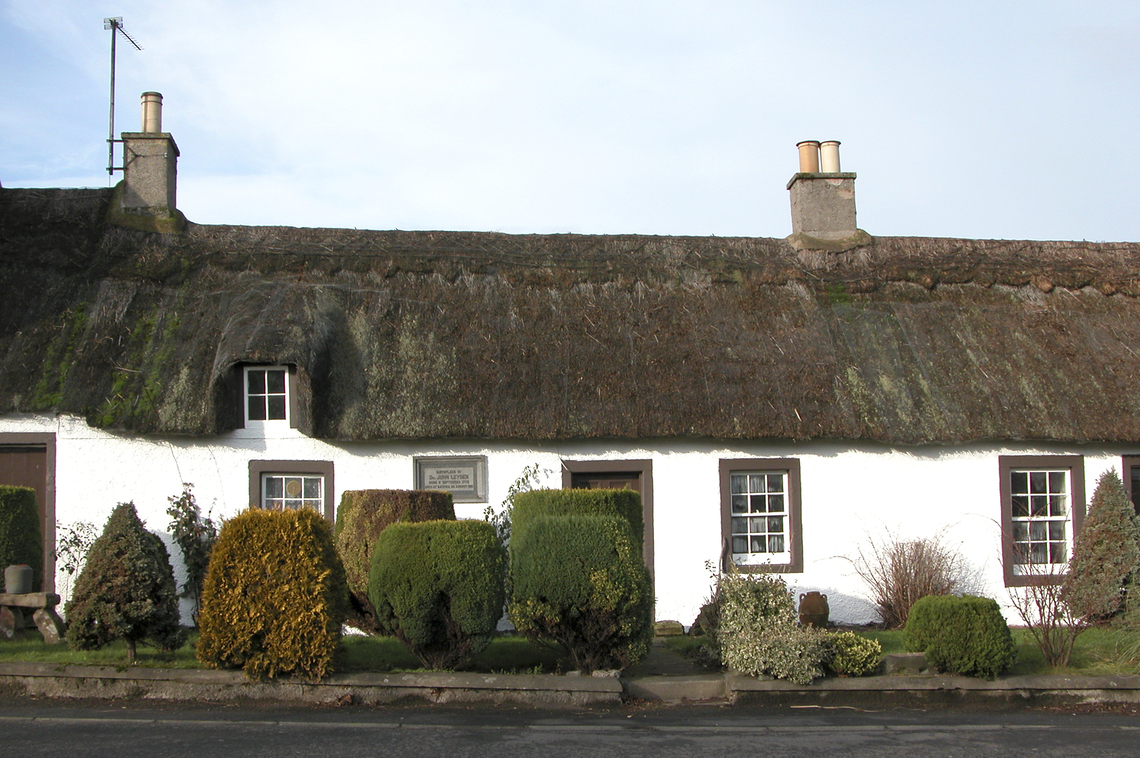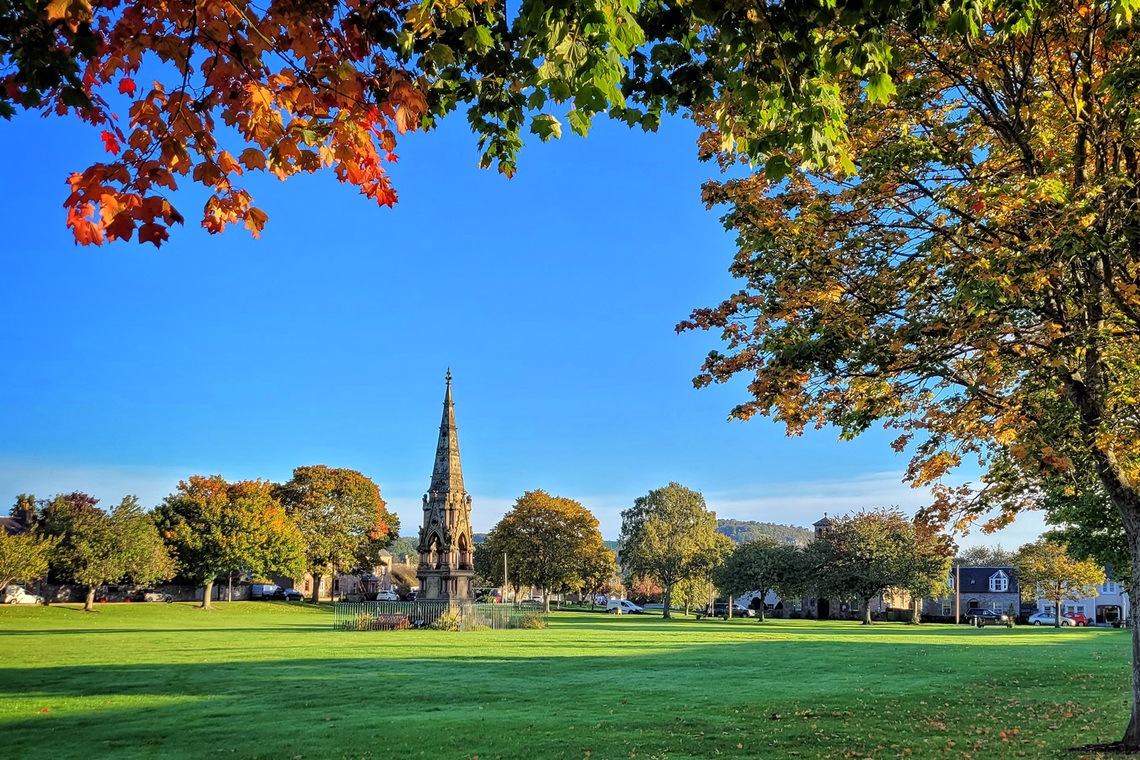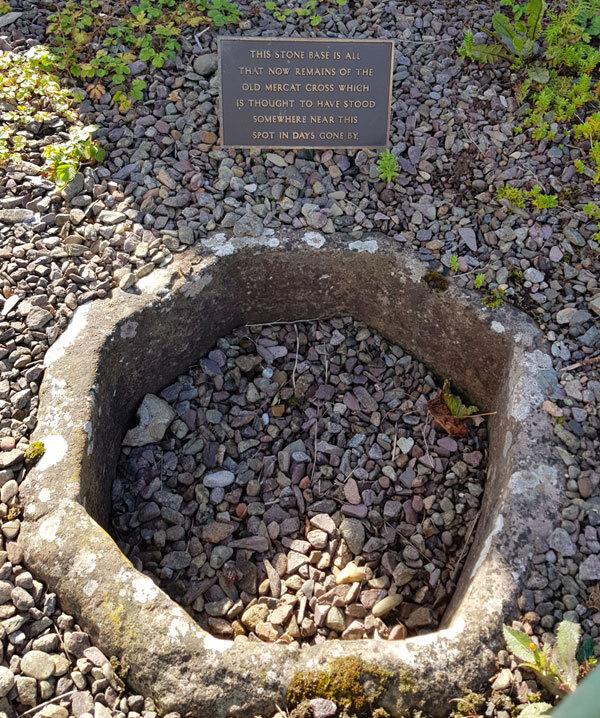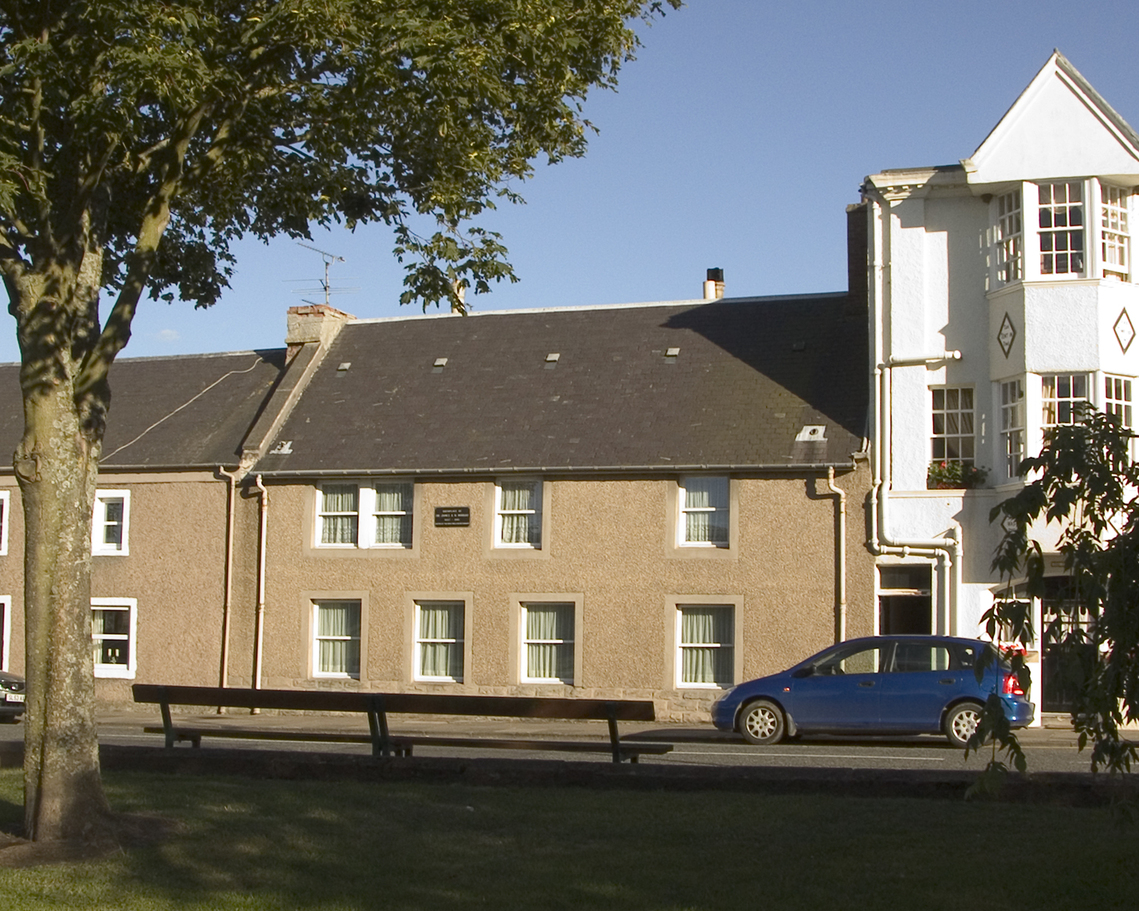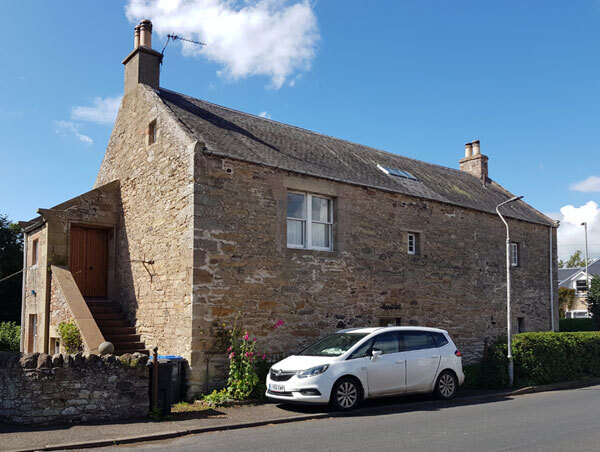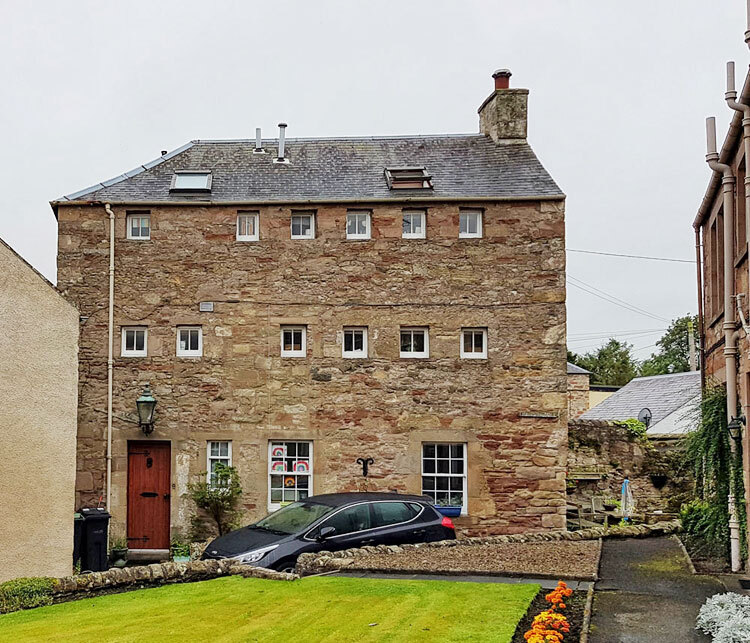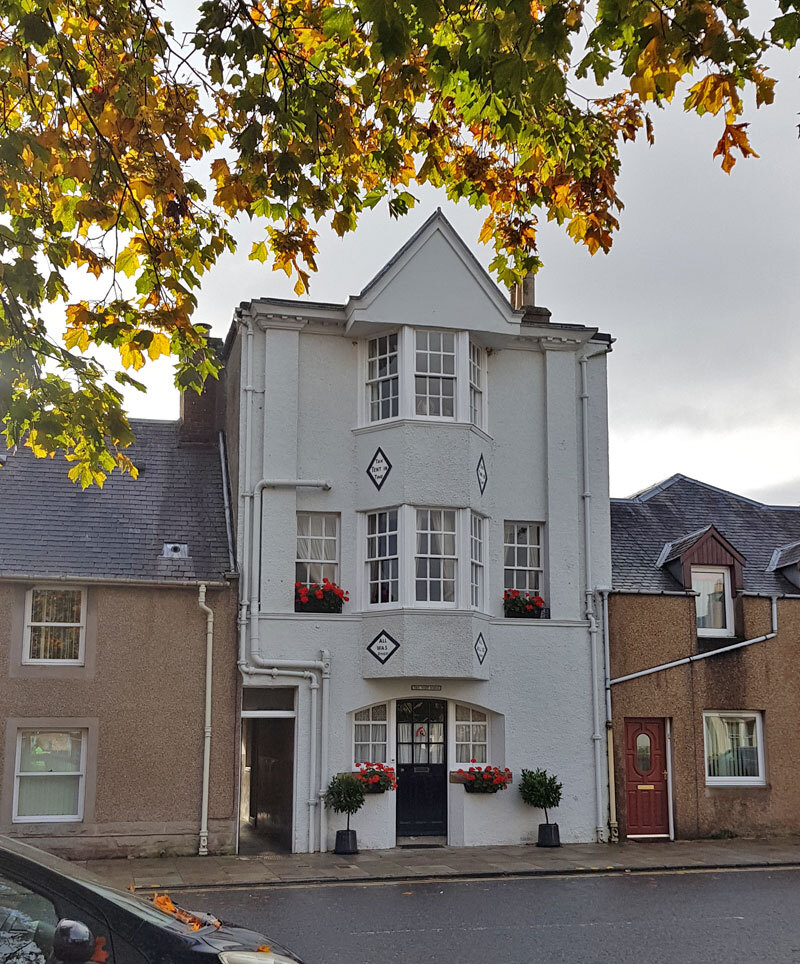Leyden's Cottage
Leyden's Cottage is located at the centre of the earliest part of the village of Denholm, overlooking a small green which is just to the northeast of the main village green. John Leyden, linguist and poet and friend of Sir Walter Scott, was born here in 1775.
The cottage now has A listed status reflecting it’s importance as the birthplace of Scots poet and linguist Dr John Leyden. The cottage is made up of three single storey cottages made into one, with an upper level. It is now the only thatched cottage left in the village and one of only eleven thatched buildings known to survive in the Scottish Borders. The cottage is a private residence.
In 1793 the stocking making firm, Dickson and Beattie, set up their business in Leyden's Cottage. The cottage was used to clean the textile fibres prior to stocking manufacture. In 1803 Dickson and Beattie moved to Hawick where they became Dickson and Laing and opened the Wilton Mills in 1809-10. The Wilton Mills were the first in Hawick to have water powered spinning jennies and in 1830 they introduced the first power looms. The Wilton Mills expanded significantly over the 19th century and became one of the most prominent mills in Hawick, which was the centre for textile manufacturing in southern Scotland.
The cottage's association with John Leyden was remembered throughout the 19th century and in 1896 the cottage was restored by the Edinburgh Border Counties Association as an informal museum to him. During these works the granite memorial plaque was set within the wall next to the front door. It reads 'Birthplace of Dr. John Leyden born 8 September 1775 Died at Batavia 20 August 1811'.
After the works the cottage was passed into the care of the Earl of Minto whose ancestor had been a friend of Leyden.
The cottage is now in private ownership however it remains a significant building within the village because of its association with Leyden.
The Monument
This impressive structure occupies a very prominent position in the centre of the village green.
Erected in 1861, 50 years after his death and paid for by public subscription, the monument commemorates the life of Dr John Leyden.
John Leyden (1775-1811) was a native of Denholm and was an antiquarian, physician and poet.
It also commemorates his descendant John Lamb Leyden (1904-1988) who was a 'traveller and kindred spirit'.
Time taken, from initial proposal, to erect the memorial, to completion with all bills settled was 3 years.
Sadly, the architect who designed the Monument, Mr Hector Heatley Orrock of Edinburgh, died in 1862 and never saw it's completion.
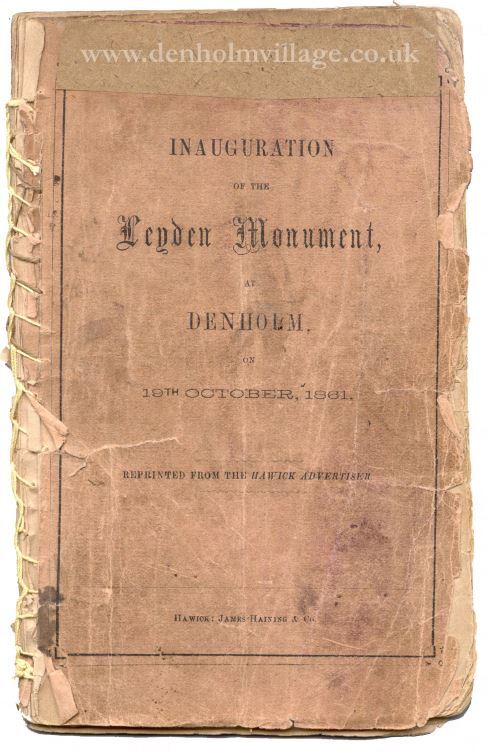
Click here to download the Inauguration of Leyden's Monument
The Mercat Cross
This was a small stone cross on a low octagonal base. It stood at the centre of the Green until in the middle of the 19th century when the feuars converted it into a water trough for the cows by taking down the cross and hollowing out the base. Sadly all that remains is part of the base which can be seen inside the railings surrounding the Leyden Monument.
Sir James Murray
Situated next to the Text house on the Main Street you will find an unassuming house with a plaque.
This is where the Editor of the Oxford English Dictionary Sir James Murray was born.
He was born in 1837 in one of the two rooms rented by his parents in the Crown Inn (now 3 Main Street).
His mother, a Hawick girl, had been a servant at Deanburn Cottage on Denholm Haugh, then the home of the Independent minister.
His father was a tailor, but though he worked hard, money was always scarce and he encouraged his sons to study and better themselves. James would have needed little telling as he seems to have been born with an insatiable thirst for knowledge and a prodigious memory.
At the age of seven his parents sent him to school at Cavers. For two years he had to walk the three miles to cavers and back but his parents must have thought it a better one than the school in Denholm. When he was nine he moved to the auld school on the Green where his ability was quickly recognised.
When he was twelve he and his two younger brothers transferred to the parish school at Minto, one and a half miles away. Clever as he was he had to leave school at fourteen because his family could not afford to send him to grammar school at Melrose. He continued to educate himself as best he could although books were difficult to come by.
At the age of seventeen he got a job as an assistant school master in Hawick. He proved such an excellent teacher that, after three years, he was offered the headmastership of a new private school in Hawick, a post he held for ten years.
In 1864 he moved to London in a vain attempt to find a healthier climate for his sick wife!
He took the first job he was offered, as a bank clerk in the city where he remained for six years.
In 1870 he returned to schoolmastering at Mill Hill in north London and towards the end of the decade he agreed to become the editor of the New English Dictionary (later the Oxford English Dictionary). He worked on this for thirty five years until his death in 1915 when it was still unfinished. He was knighted in 1908.
Westgate Hall (the oldest building in the village)
Westgate Hall stands at the western and south-western approaches to the village. Dating from the 17th century (the date 1663 appears above the door), it is an example of a building of that period that was once common in Scotland and is now a category A listed building.
When Sir Archibald Douglas succeeded to the barony of Cavers in the 1380s, he granted the lower part including Denholm, to Thomas Cranston.
He was the ancestor of the Cranstons appearing in the Lay of the Last Minstrel, the poem by Sir Walter Scott. But in 1658, the baron of Cavers, also called Sir Archibald Douglas, repurchased these lands and added them back to the barony. The castle of the Cranstons in Denholm was either built anew or renovated, around 1664.
The name Westgate Hall was used to distinguish it from another building, East Castle, on the east side of the village on the road to Jedburgh. It is a two-storey house, with a relatively recent extension and external staircase on the left side of the building. There are four skew-puts (the cornerstone that supports the coping of a gable). The western one bears the heraldic heart of the Douglas family.
Internally at against the right (i.e.north) wall there is an original large fireplace, 5 ft. 10 in. wide. This includes a large lintel (2 ft. high) with two recessed panels. The left panel, which is octagonal, contains the initials S A D for Sir Archibald Douglas and below them the charges of his shield, namely a heart, with three mullets in chief. The right panel is oblong, containing the initials D R S for Dame Rachael Skene and below these letters a 'skean' or dagger between three wolves' heads couped.
In 1907 the top floor was made available as a meeting hall by the Palmer-Douglases, when the outside staircase was added, and was so used until the 1950s.
The Stocking Mill
Situated on the west side of the village near the children's playpark and tucked behind another house this Stocking Mill in the village dates from the late 18th century.
A three-storey, 2- by 6-bay rubble building with small windows for individual stocking frames in the upper floors was later converted to a warehouse by the insertion of a door and wall crane at first-floor level and is now a private house.
This mill represents an interim stage between cottage industry and the full-blown factory production of the Hawick mills. It is now a private house.
The Text House
Originally being the same height as it's neighbouring properties on the Main street in 1910 it was pulled down and rebuilt by Dr John Haddon with text on the front inspired by similar ones on a house and Hawick.
"All was others: all will be others"
"Tak tent in time, ere time be tint"
Dr John Haddon was a good medical practitioner and he was philanthropic enough to buy up several house's in the village and leave them in trust to be let, rent-free, to elderly people who had been born in Denholm.
